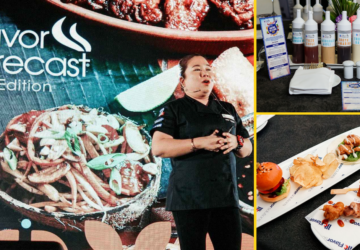Think “robot barista” and an intelligent humanoid machine making coffee may spring to mind. Robots however also refer to machines that automatically perform complicated or repetitive tasks with a high degree of reliability, such as ones used in an automotive assembly line–devices that, for coffee, exist now, or are attainable in the near future.
And in an industry built on the virtues of consistent, quality coffee, there lies an opportunity to harness this technology to innovate processes, streamline operations, and minimize human error. But what does this mean for the specialty coffee barista?
Transitioning to partial automation
The steps to making an espresso, the base of most café-style beverages, are as follows: Whole bean coffee is ground through an espresso grinder and dosed into a contraption called a portafilter. It is then distributed to evenly level the grounds, and then compressed with a tool called a tamper. Finally, the portafilter is locked into the espresso machine, where a barista uses a combination of time, volume or mass, and visual inspection to ensure a quality espresso shot. After the beverage is ready, the spent coffee grounds are knocked loose from the portafilter, which is then cleaned before the process is repeated for the next coffee order.
There is always a chance for the final product to lose quality due to a lapse in any one of the steps involved in making an espresso, and coffee equipment companies have begun working on technologies that aim to improve consistency of these individual tasks through simple or complex machines.
There are coffee grinders that dose out grounds precise to the tenths of a gram. A popular tool by ONA Coffee called an OCD enables a barista to simply spin a tool with extruded metal fins to mimic traditional finger distribution, which also has hygienic benefits. The Puqpress is a small, tabletop appliance that tamps the coffee down automatically, using the exact same force each time. And some espresso machines have the technology to stop the brewing process at a pre-specified volume or mass, to ensure the same beverage yield shot after shot.
Entering full automation
A coffee company called Eversys has started the manufacture of machines that are the next level in bean-to-brew—also called Fully Automatics. The Eversys Cameo, for instance, is an all-in-one machine that includes a coffee grinder, with a footprint comparable to that of a traditional espresso machine. It can take care of the grind setting, dose, tamp, shot time, and beverage yield, automatically and repeatedly. Then it surpasses existing machines of this type by including a steaming system where the barista can dial in temperature and froth amount, creating incredibly well-textured milk.
In addition to the difficulty of training a barista to pull a shot, it can be equally challenging to train milk frothing consistency, as it’s a process that’s reliant on both miniscule hand movements and split-second decision-making. With the Eversys, all that’s really missing is the latte art.
Redefining the barista
All of these advancements may suggest that this is the beginning of the end for the specialty barista. But another way to look at it is the technology’s potential to make the role of the barista more efficient by reducing the physical stresses of repetitive tasks, which also opens up the opportunity to pursue different skillsets that still complement one’s career in coffee.
Matt Perger, a barista champion from Melbourne and incidentally an ambassador for Eversys, offers a compelling prediction of a split in the specialty barista role following the increased adoption of automation in the coffee bar: A “technical barista” calibrates and services machines, ensures that everything is set for quality, and does not face customers or make coffee on a daily basis. This specialized role can also mean one person for multiple branches, which has its benefits in streamlining business operations.
Machines aren’t foolproof, so despite the technological advancements in the industry, baristas are still needed to oversee coffee production or fix the kinks when necessary.
The second role is a “service barista,” who is responsible for the typical barista role of manning the till, talking to customers, and making coffee. Since in this ideal scenario, fully automated machines largely take care of drink quality, this role can greatly expand on the customer service and education aspect, strengthening the oft-used comparison of baristas to sommeliers.
Perger’s roles allow a wider range of personalities to become baristas, allowing them to focus on a path that better suits their strengths. And these two examples are just a couple of possible evolutions of what the future coffee professional can be. There will always be room for the specialty barista, even if that passion is distilled into specific aspects of it, instead of as a whole.
After all, coffee shops are about the entire experience as much as the drink itself, and for that, the human element is essential.
Originally published in F&B Report Vol. 16 No. 1





